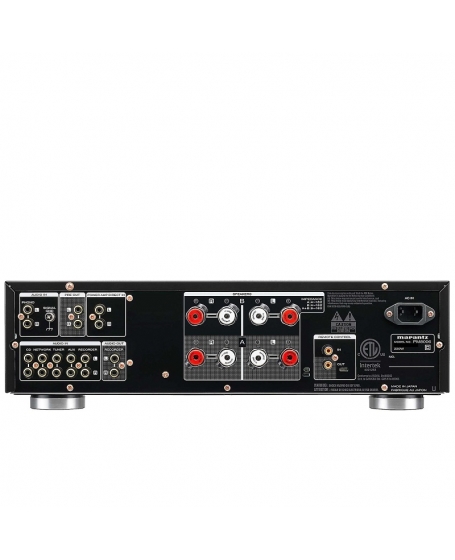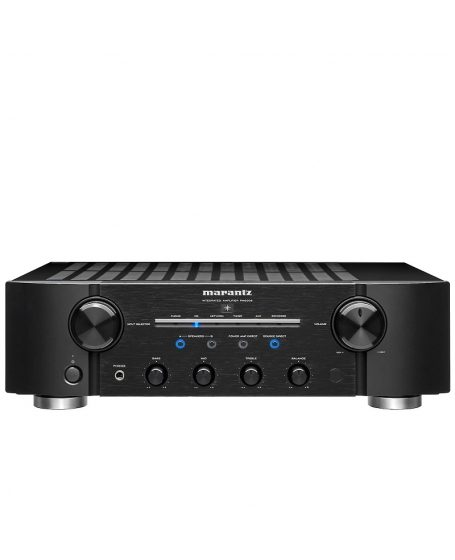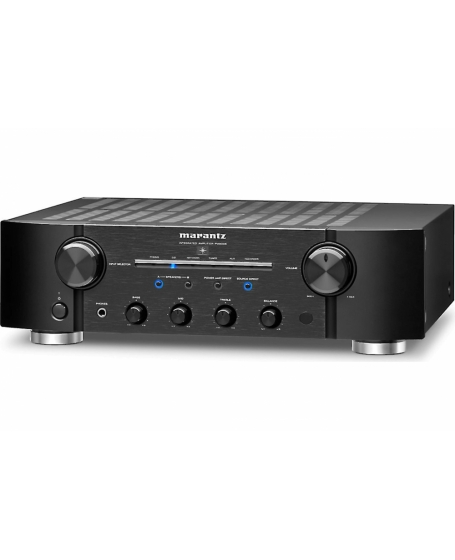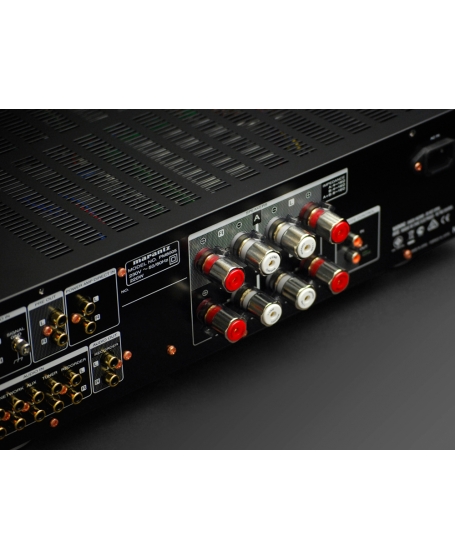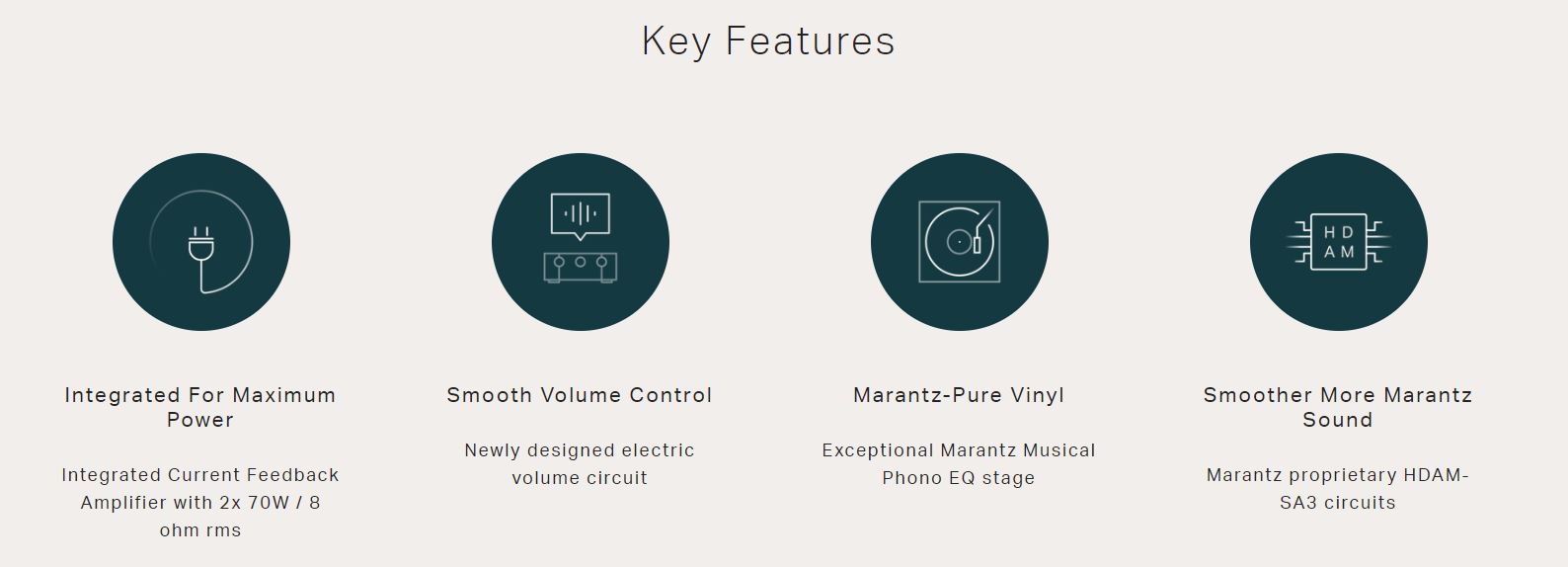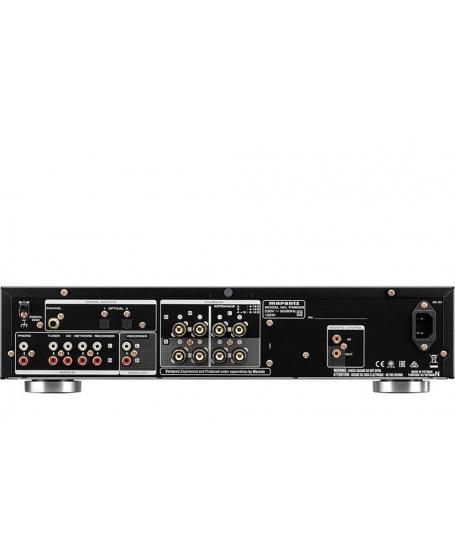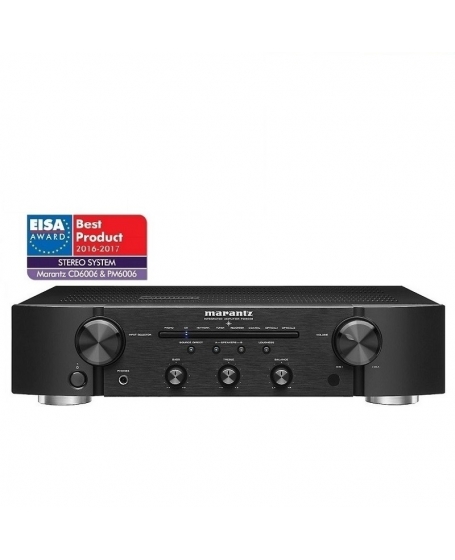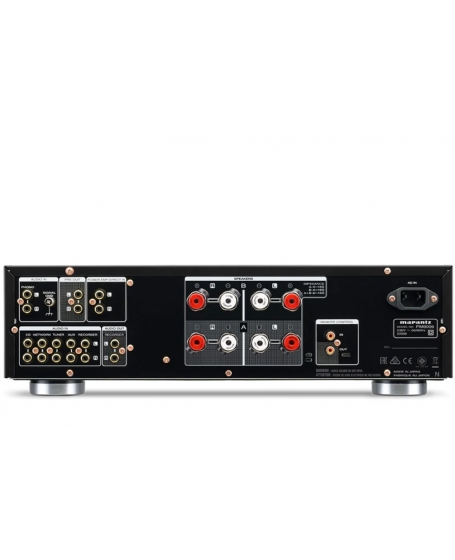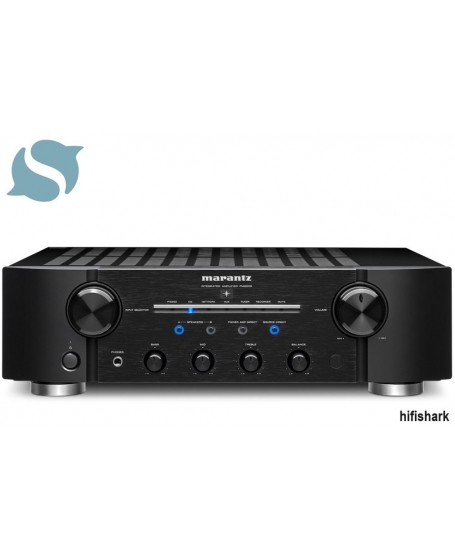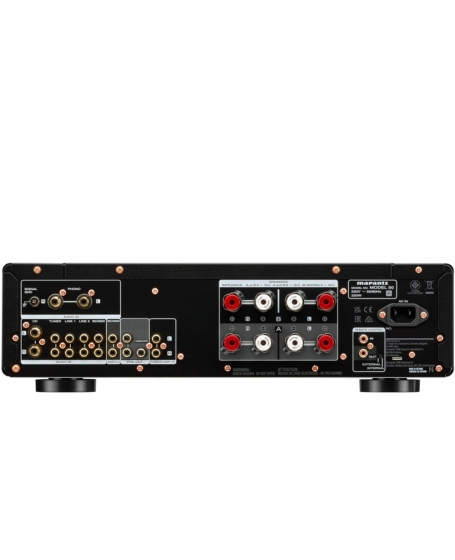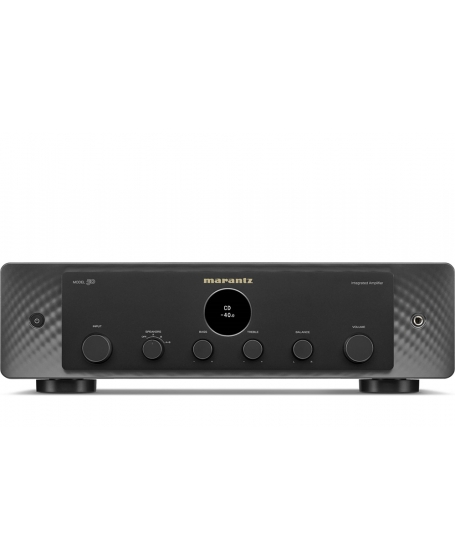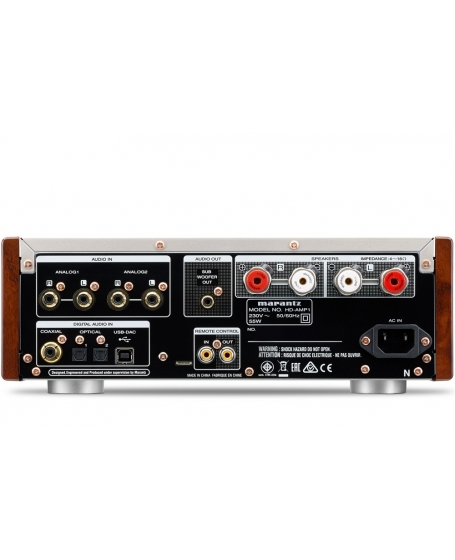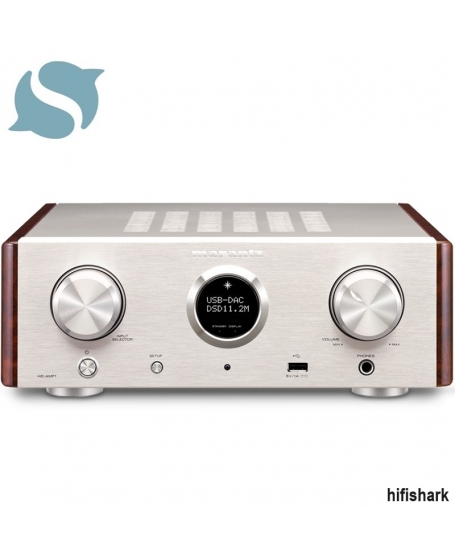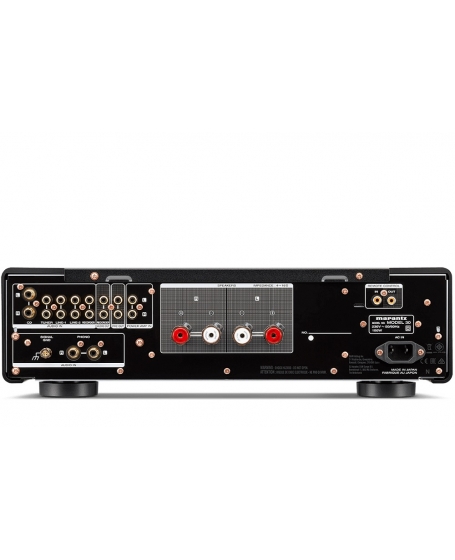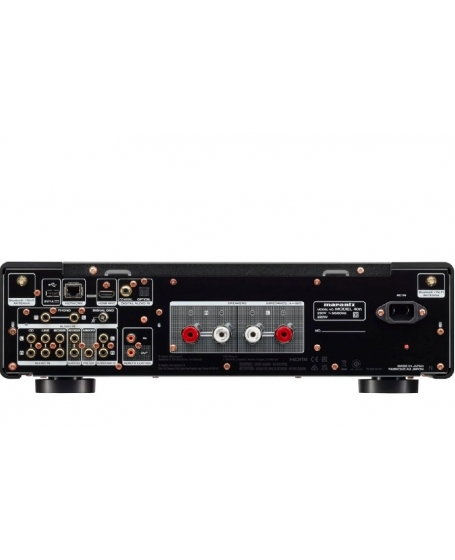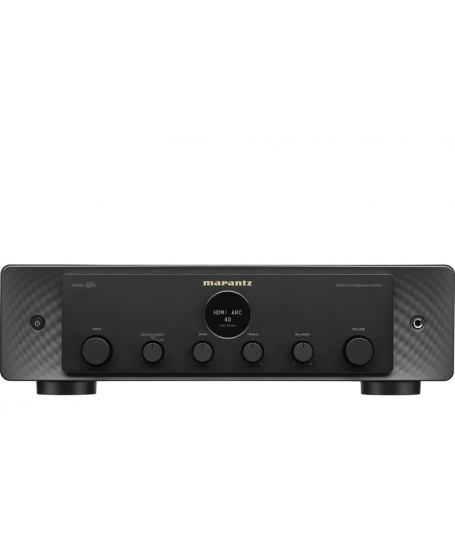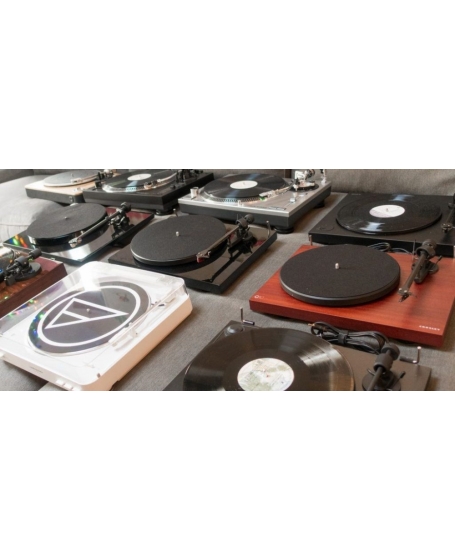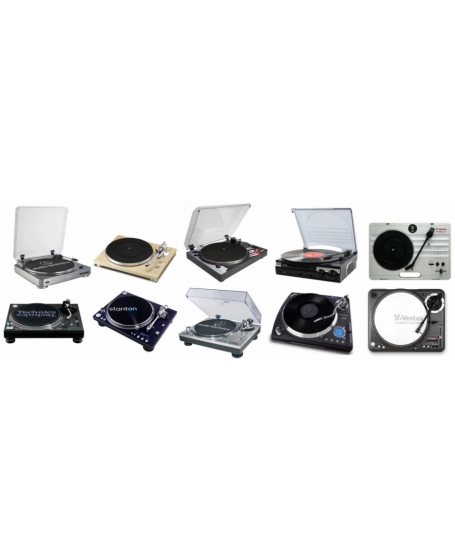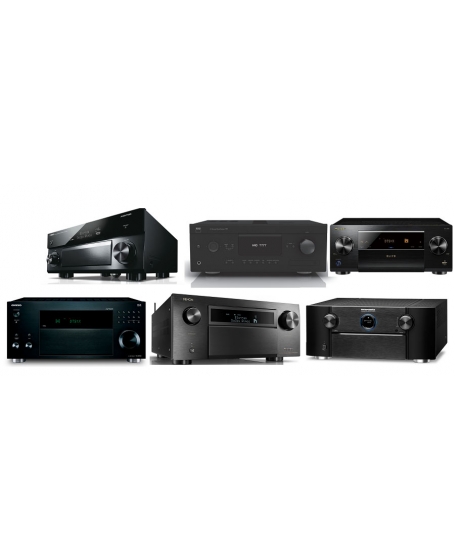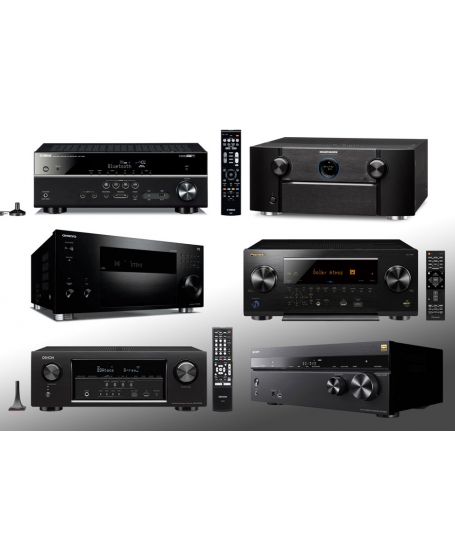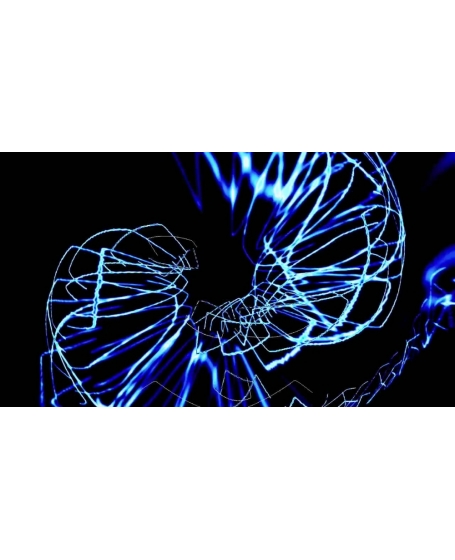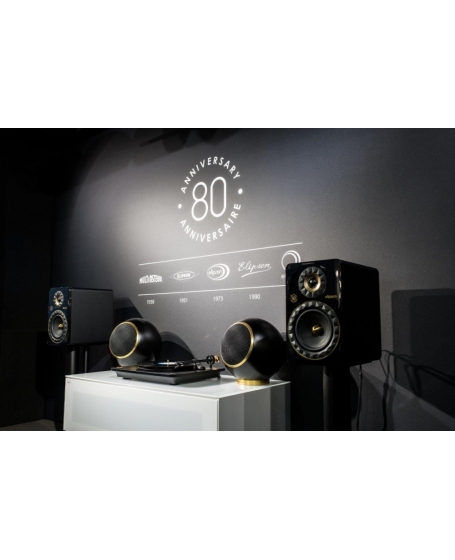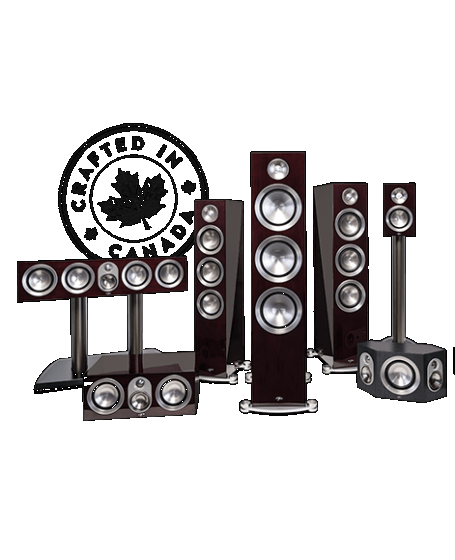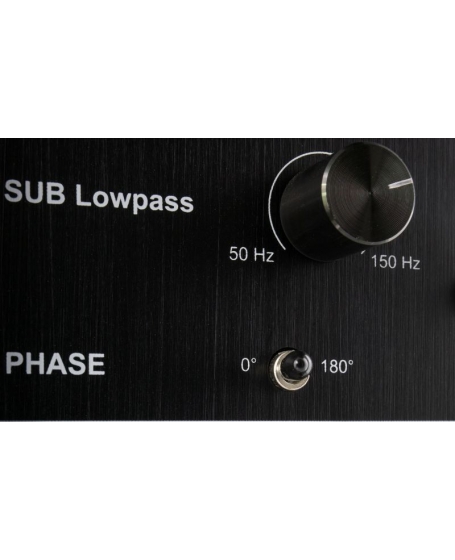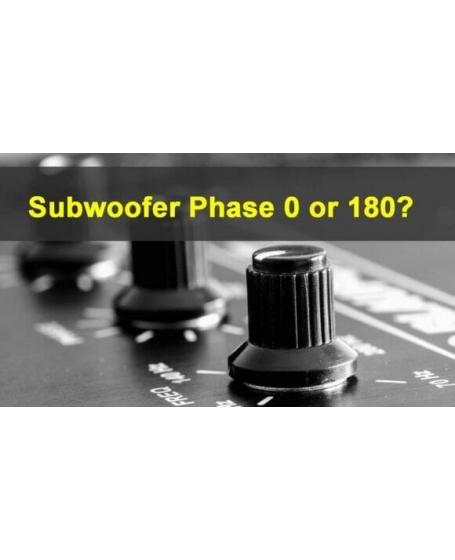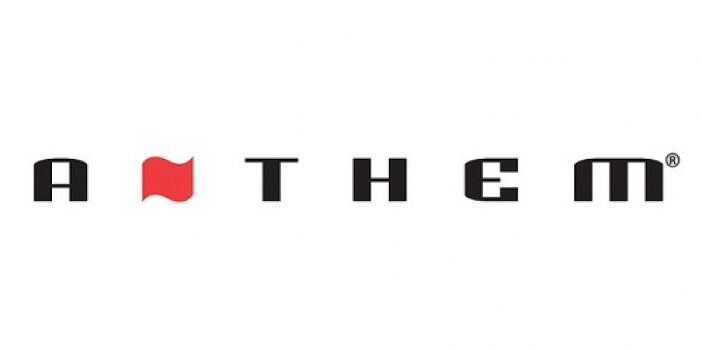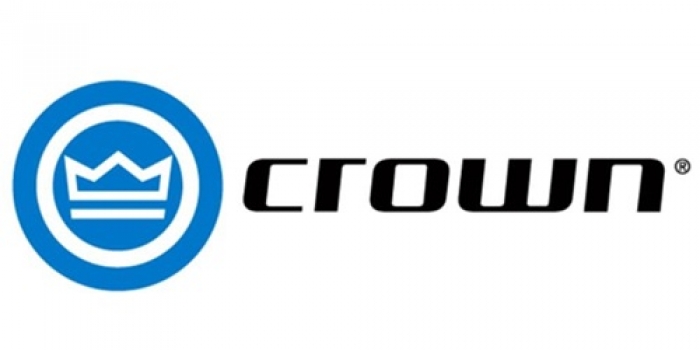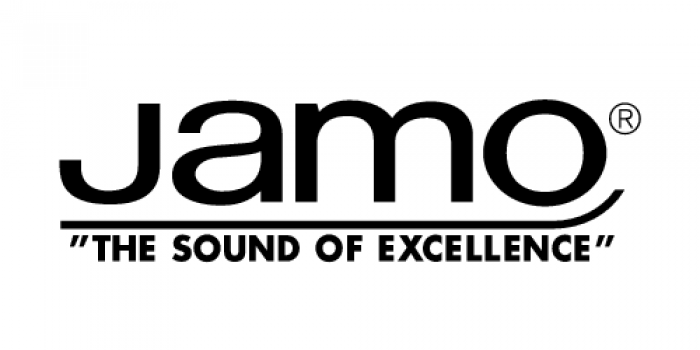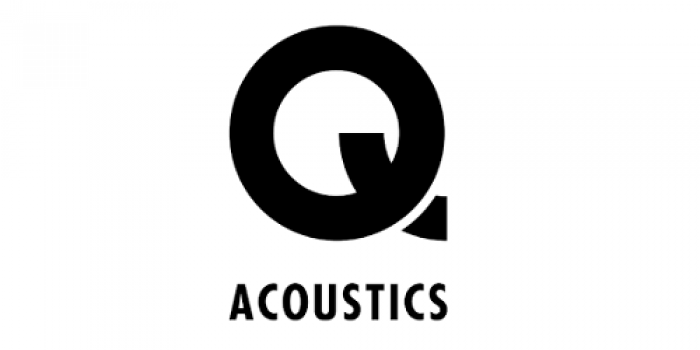Marantz PM8006 Integrated Amplifier Made In Japan
SKU: Marantz PM8006 (B)EISA AWARDS Best Product 2018-2019
Get it with 0% Credit Card Instalment Plan Up to 36 months
1) Maybank Credit Card up to 36 months ( Lazada )
2) Maybank Credit Card up to 18 months ( Shopee )
3) PBB Credit Card up to 12 months ( Shopee )
4) OCBC Credit Card up to 36 months ( SLAV )
5) CIMB Credit Card up to 18 Months ( Shopee )
Magazine Review Available Now, Please Press Review Button Below.
User Reviews Available Now, Please Click On The Photos.
PM8006
INTEGRATED AMPLIFIER WITH NEW PHONO-EQ
Pure, powerful Marantz sound
For the integrated amplifier connoisseur, the PM8006 delivers the power you expect from a Marantz. Not only does it deliver the controlled power that audiophiles demand, it creates the warm musical sound you expect from Marantz.
Current Feedback
Current Feedback amplification is a well-known, Marantz-original circuit technology, thoughtfully designed to match the requirements of Super Audio hi-res music for wide-bandwidth, high-speed reproduction. The impedance at the Current Feedback point is limited, generating a very low phase shift. Marantz Current Feedback amplifiers reduce the need for phase compensation by minimizing Negative Feedback (NFB). This simplifies the signal path and results in a high through-rate, excellent transient response and superb sonic transparency across the full bandwidth. Unlike conventional Voltage Feedback topology, Current Feedback also makes the power amplifier insensitive to difficult loudspeaker loads.

Marantz HDAM Technology
Marantz developed its own discrete circuit boards called Hyper-Dynamic Amplifier Modules, or HDAMs, to replace the chip based amps used elsewhere. Using discrete surface mount components with short mirror-image left and right signal paths, HDAMs outperform the regular integrated Op-amps dramatically in Slew Rate and noise level. The result is much more dynamic, accurate and detailed sound. Over the years, Marantz has developed different HDAMs to fit the particular requirements of players and amplifiers. The PM8006 uses the high-grade SA3 version.

Marantz Musical Phono EQ
For a long time, Marantz integrated amplifiers have featured high-quality phono stages. We’ve elevated our commitment to vinyl with the Marantz Musical Phono EQ stage, as seen in the PM8006 amplifier. Enjoy the very best playback of all music sources, be they digital or analog. Marantz Musical Phono EQ uses two-stage amplification, allowing less gain per stage for lower distortion. The PM8006 combines Marantz HDAM technology with JFETs (junction gate field-effect transistors) in the input stage, providing high input impedance that eliminates the need for AC coupling capacitors and simplifies the signal path, vastly improving the signal purity overall.

Toroidal Transformer
A Toroidal transformer offers several advantages that derive from its efficiency and power capability. The shape of it lends to low levels of electromagnetic radiation and mechanical vibration, producing improved sound quality over what you might experience with dated transformer models.

Amplifier
Number of Channels 2
Power Rating 70 W per channel @ 8 Ohms RMS
100 W per channel @ 4 Ohms RMS
Frequency Response 5 Hz to 100 kHz
Signal to Noise Ratio MM: 87 dB
High Level: 106 dB (2 V input)
Power Amp Direct In: 125 dB
Total Harmonic Distortion (THD) 0.02%
Damping Factor 100
Connectors
Input 6 x stereo RCA L/R (1 MM phono)
1 x stereo RCA L/R power amp direct
Output 1 x 1/4" (6.35 mm) headphone (front)
1 x stereo RCA L/R
1 x stereo RCA L/R pre-out
Speaker Connectors 4 x binding post pairs
Other Connectors 1 x RCA remote in
1 x RCA remote out
1 x AC power inlet
1 x ground terminal
Input Sensitivity MM: 2 mV / 47 kOhms
High Level: 200 mV / 20 kOhms
Power Amp Direct In: 1.6 V / 15 kOhms
General
Front Panel Construction Metal
Power Requirements 240 VAC, 50/60 Hz
Power Consumption Operational: 220 W
Standby: 0.2 W
Dimensions (W x H x D) 17.3 x 5 x 14.9" (440 x 128 x 379 mm)
Weight (Approximate) 26.5 lb (12 kg)
MARANTZ PM8006
REVIEW By SMARTHOME MAGAZINE
- Share This!
With the PM8006 Marantz actually goes back to the seventies and eighties of the last century.A true analog, completely discrete built-in integrated amplifier with a focus on the entry for vinyl players. Nothing digital to confess and an exponent of the latest trend in the audio world. Time for a test!
The PM8006 is welcomed in the hybrid world of the various listening rooms that are in use here. On the one hand, the fifties to eighty of the last century have been conserved there and on the other hand it is a modern lab, equipped with the latest (digital) techniques.

Marantz PM8006
Streaming, wireless, design, apps, digital, small active speakers, touchscreens and multifunctionality in a single housing are currently popular in the mass market. That is a development that fits in with the current picture of the times and something that everyone is lagging behind, because others do the same. Nothing wrong with that, because there are a number of very good solutions available. Also a blessing for the retailers who can score with very new product groups. But, anyone who thinks optimistically might assume that this hype is already over. The latest trend goes back to analogue. David Sax wrote a nice book about it, entitled The revenge of analogue. Just vinyl, open reel, a revaluation of the cassette deck and loose components connected with wire. The analogue trend also includes a return to the typewriter, the fountain pen, physical stores, the mechanical watch, books, analog cameras and other tangible objects, says Sax.
According to Andrew Sullivan (well-known blogger), many are currently suffering from ‘digital distraction illness’. Hopefully that will be covered by your health insurance. The latest integrated trend gives the standard integrated amplifier, as known from the seventies and eighties, the right to exist. There are still plenty of beautiful CD players built and the range of quality excellent passive speakers is very large. Those who want to be really trendy at the moment have a nice record player, possibly an open reel recorder or cassette deck, some loose components in the form of an amplifier, (sa) cd player or running gear, converter, phono stage and as many loudspeakers as possible. For those with such systems, they fundamentally understand something about the essence of sound reproduction.
Two basic problems
With all the new and often extremely seductive techniques, there are two basic problems. Converters, streamers and other network-related equipment uses very advanced integrated circuits. The service window is only a few years. After that, the relevant parts are no longer available and the device can go to the waste separation. This even applies to very expensive electronics. Most equipment from the fifties to the eighties is still fully maintainable. After an update or restoration an amplifier from the year 1958 plays again for about thirty years. Many modern equipment is simply ‘throw away material’.
That does not have to be a problem with a normal business approach. A 2000 euro converter can simply be written off. With a two-year use, this is about 18 euros per week. Sell such a thing at Marktplaats for a residual value of 15 euros. The next owner is then responsible for the service problems that arise. The second basic problem has to do with sound quality. Music servers that are connected to the amplifier by means of a digital or analogue output do not have any blame here. There is then a sound quality that is equal or better to what the best CD / SACD players can do. The issue is in all equipment that uses a (home) network, wireless or wired. The sound usually sounds less via such a network than directly via the analogue or digital outputs.

Discrete structure
Marantz is committed to the latest trend. The PM8006 is an almost classic integrated amplifier, which you could put next to a Model 1060 (1975) or 1260DC (1978). There is a triple tone control on board, a mm-phono input, several line inputs, a recording output to connect a tape deck, a pre-out, a power-amp-direct-in, two connected groups for loudspeakers and one headphone jack. The only differences with the famous amplifiers from the last century are the presence of a remote control and the link to access multiple devices via the same remote control. Another difference is the designation ‘cd’ on one of the line inputs. Of course, it lacked the classic amplifiers.
A cursory inspection of the completely analogue electronics shows that this Marantz is made up of discrete parts. The phono board is a separate component. The phono function is not a part that is present on the printed circuit board of the line amplifiers. The switchover of the inputs is done with miniature relays. The only integrated components are the HDAM SA3 modules, which can also be found in the phono board and developed by Marantz for the more advanced audio equipment. This discrete structure means that you have a device that is easy to maintain even after the official Marantz service time has ended. Should there ever be a HDAM defect in twenty years time, almost every electronics engineer can replace such a thing with a discreetly built opamp. On the other hand, you can of course ask yourself whether discrete electronics components can still be found in twenty years’ time. Some capacitors, tubes and transistors are already on the list of almost extinct species. Maybe we will be building electronics by that time with very different techniques. On the other hand, such immense quantities of electronics components have been created that something will always crop up in the next fifty years.

Capacitors
Ergo, the Marantz PM8006 goes back very well to the nostalgia of the last century, were it not that there are quite some advanced techniques available. According to Marantz, the power supply to the speakers is the reason for the sound difference between amplifiers. The undersigned thinks that power plays a role, but there are other factors that explain the sound difference between amplifiers. The passage about that flow in the user manual raises some questions. The story about the short-powerline is almost incomprehensible in the Dutch translation, but in English it becomes somewhat clear what Marantz means by that. It probably means that there is as short and effective a connection between the power supply and the power stage as possible to transport the power. The power that this amplifier can supply is about 70 watts per channel. In a 4 Ohm load that is 100 Watt per channel, so together 200 Watt. That’s right with the power that this amplifier absorbs from the mains.
For the rest there is, near the CD input, a buffer amplifier and the phono amplifier is a new design. The input stages have JFETs. According to Marantz, the input impedance is higher and a number of coupling capacitors are removed. Of course, the latter is always an advantage. The ideal image is an amplifier without capacitors. Condensers always give coloring. A FET amplifier stage indeed has a high input impedance and a low output impedance. Marantz claims that the circuit can therefore be simpler. Perhaps because less stages are needed to get that low (desired) output impedance? Where those capacitors then expire is not entirely clear.
You can set up circuits with (J) FETs according to four basic configurations. Capacitors used in those basic circuits serve as coupling capacitors or bypass. Or do capacitors lapse because the underlying stages are decayed or simpler? A phono amplifier has an RIAA correction. In principle, this must be as accurate as possible and the mirror image of the correction used when cutting a plate. According to Marantz, the RIAA correction is performed by an HDAM. Behind it is a class-A operational amplifier. Marantz claims that the correction is very accurate and with minimal distortion. The fact that it is minuscule signals must be somewhat put into perspective. A mm cartridge has a considerably higher output voltage than an mc.

Steady comeback
An advantage of this integrated amplifier is that a separate (theater) pre-amplifier can be connected. The PM8006 is then used as a (theater) power amplifier. Please read the instructions for use (on the enclosed CD-ROM). The tone control, volume control and input selection of the PM8006 do not work via the power-amp-direct-in function. The power amplifier can be reached directly and uncontrolled via this input. The PM8006 can also be used as a preamplifier. Any imaginary power amplifier can then be connected to the preamplifier outputs. The cassette deck and the open reel recorder are currently in a steady comeback. This has been going on for some time in the studio world, but now the consumer is also reaching back to these old values. The PM8006 is therefore equipped with an output with a signal with a fixed output voltage (depending on the source selection) and with that a tape or cassette deck can be controlled. Naturally also digital recorders with an analogue input. The PM8006 does not have a real tape loop, so post-checking is not possible. Basically, a loop could be made by returning the output of the tape deck to the power-amp-direct-in, but that is somewhat risky.
Marantz PM8006: Listening
After the experiences with the PM-10, the PM8006 means a return to the well-known Marantz territory. The PM-10 is atypically neutral for a Marantz product and can play gigantic (controlled) woofs through the loudspeakers. The class D circuits provide a gigantic drive over the entire frequency range. This can be heard within the entire range, but mainly creates new perspectives in the layer and mid layer. This makes the PM-10 pleasantly realistic, provided that the connected speakers also have specific characteristics. The PM8006 means a return to the pleasant and minimal touch of heat that is characteristic of many Marantz products. The challenge is to select a set of speakers that form a natural match with the Marantz.
That is always the challenge and the most time-consuming and sometimes ungrateful aspect of reviewing. It is completely impossible to connect all incoming loudspeakers to the same amplifier or to use the same loudspeakers to judge different amplifiers. There is a very complex electrical interaction between an amplifier and a loudspeaker via the cable. That must be correct, otherwise you will never get the intended sound image. A reference is then required. That is very simple. References are for example a Fender Telecaster with a specific guitar amplifier within the context of a room in which is being played. A reference is also the very specific sound of the Lady Blunt Stradivarius or the Yamaha CFX Concert Grand. Both in the specific acoustic context of the moment. Sounds that are hard pressed in your memory. You want to hear those sounds as accurately as possible in a system. Tuning a system means then approaching those references as closely as possible. That works very pleasant because there is a clear goal. An amplifier then has cables and a set of loudspeakers that present such a reality. If that succeeds, then the match is also correct.
The Marantz PM8006 initially went completely wrong because of a wrong match. Eventually a set of loudspeakers was found and a piece of cable with which things came to the right place. That does not mean that reality is approached for one hundred percent. Each audio product has a qualitative limit. A good matching set also has a performance upper limit. However good a mini monitor may be, you will never get very close to realistic representation. You miss eg ground tones and a certain energy to fill the space completely. But, what can be done with such a set, absolutely must have a clear interface with the representation of realism. Is that all important? Yes, the essence of audio is that reality is approached. There is nothing more beautiful than the sound of real instruments and voices. Dolby Atmos in the cinema also aims to make the sound experience as realistic as possible. This is done by 3D soundscaping. If the basic principle of realism no longer applies, then the essence of audio is gone and every activity in it is completely useless. Or it must be a life fulfillment to throw around aimlessly.
The nice thing is that almost every system has some bits of reality in it. The trick is to unite all those pieces in the same system. Grosso modo finds the Marantz PM8006 the finest match with speakers that do not form too complex a load. Preferably a somewhat higher return. Advertisers who want a lot of power are a bad match. The drive that this amplifier will play with the right speakers will be much less if the speaker in question is not matched. Finding such loudspeakers is no problem. There are many beautiful speakers available between 200-1500 euro / set. The better that match, the better this Marantz will behave with respect to speed. With the basic features, the beautiful stage display with plenty of focusing and depth.
Phono
There are few certainties in life, but it is almost a rule that if you connect a record player to an amplifier, hum is audible. Likewise in the listening room, but the PM8006 does not suffer any blame in it. The deep backgrounds can of course be found in the shadowy world of earth loops, residual currents and false assumptions. The issue was quickly out of the world and after connecting a suitable and classic mm-phono cartridge, there was a chilling silence. The built-in Marantz phono amplifier is extremely silent and does not allow any hum or noise to be heard.
Nowadays new MM cartridges can be found with sublime performance. In the past there were a number of mm’s with top performances that are still fully up-to-date today. Examples are some Shure’s, including the famous V15 Type 5, the Stanton 681 triple E, the ADC XLM (optimal in the famous ADC tonearm) and the Coral 666 (E) X. To listen to the phono-stage, there has been some experimenting with the above cartridges. It would actually be useful if the built-in phonostage had a capacity control and an MC input would not be a big problem either. But possibly Marantz has also positioned this amplifier for a target group that starts with entry level turntables. Such copies are often equipped with the current and often very good mm cartridges. Anyone who wants to run mc can connect a separate phono amplifier to the line inputs of the PM8006, but also purchase a step-up transformer. The Marantz phono-stage of the PM8006 gives a nice stage, detailing and is very quiet and without noise.
Postscript
Marantz uses the PM8006 integrated amplifier to the latest trend. In fact, a force-growing subtrend that falls just outside the mainstream. A trend for people who want to distinguish themselves. Both in quality and in experience. For the new generation of young people, the analog experience with amplifiers, turntables and tape decks is completely new. They have never seen that before. Analogue has not only to do with nostalgia, but with the desire to be able to work with physical objects again. Something different than approaching everything via touchscreens and apps. The virtual world is demanding a physical dimension and that is, according to Sax, an important reason for the revival of analogue. But,
Marantz comes with a fully analogue amplifier that is discretely constructed and also focuses on the excellent built-in mm phono stage. Complete that with one of the affordable and trendy record players, buy a nice CD player or a tape recorder, a set of beautiful speakers and you have a phenomenal experience. Combine that beautiful analog Marantz technique, with real buttons and switches, with a streamer, music server or a virtual reality sound system. So, find the balance and enjoy both worlds. Marantz takes her part by making new acquaintance with those traditional values.

.jpg)
